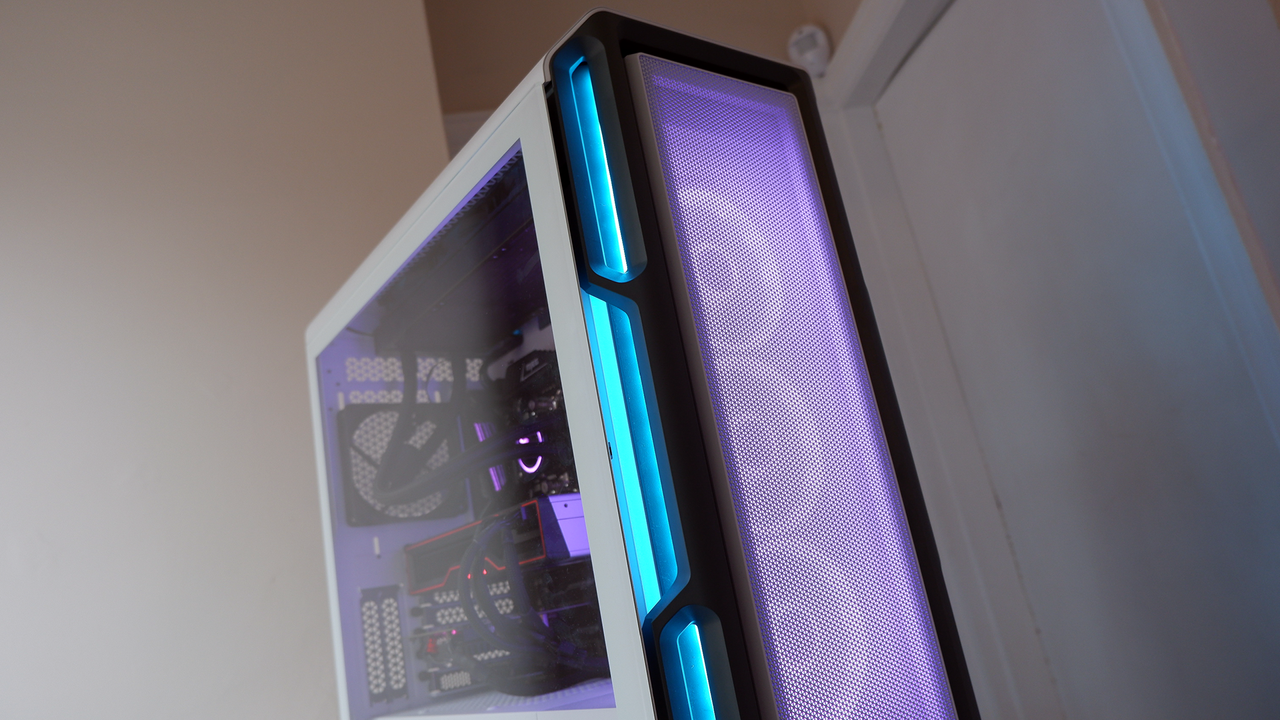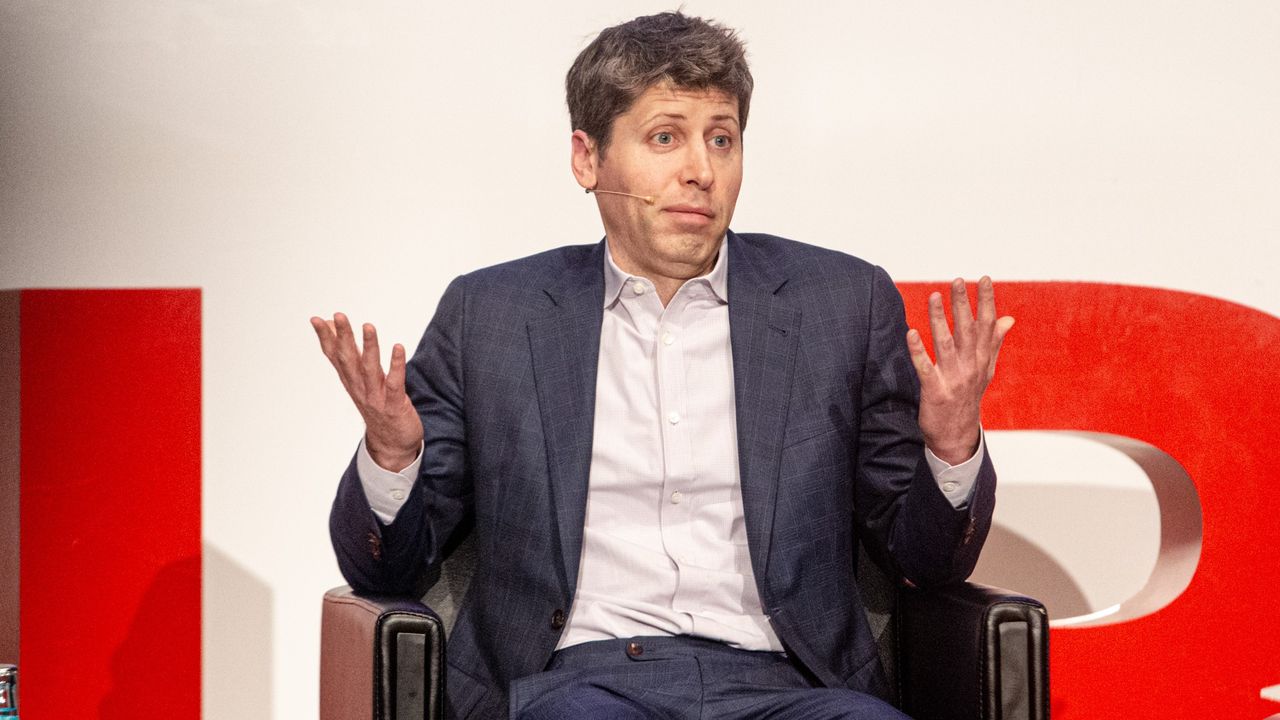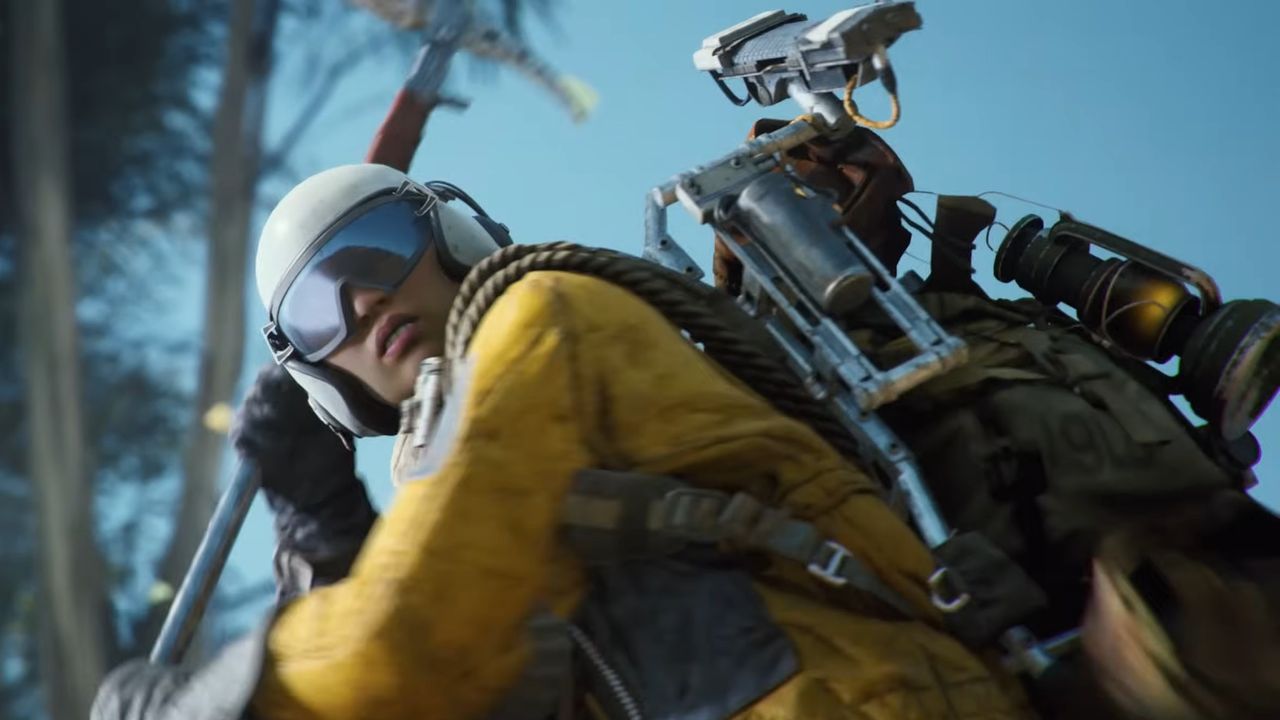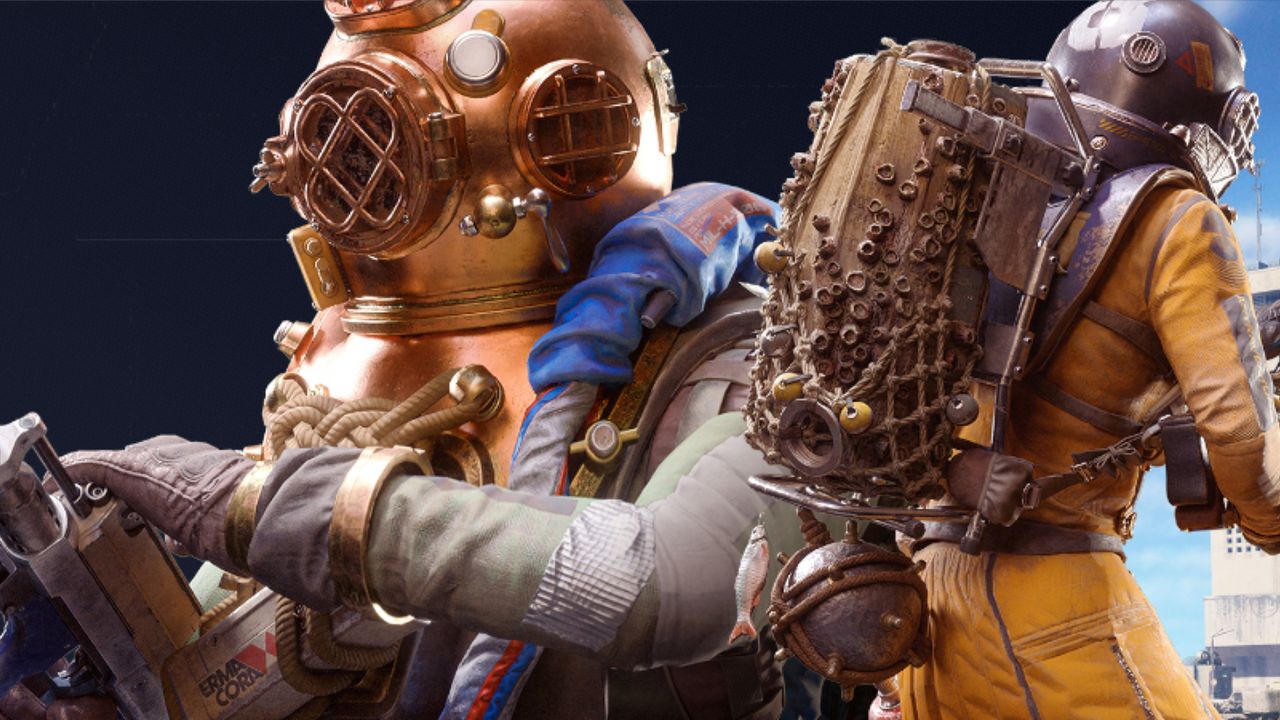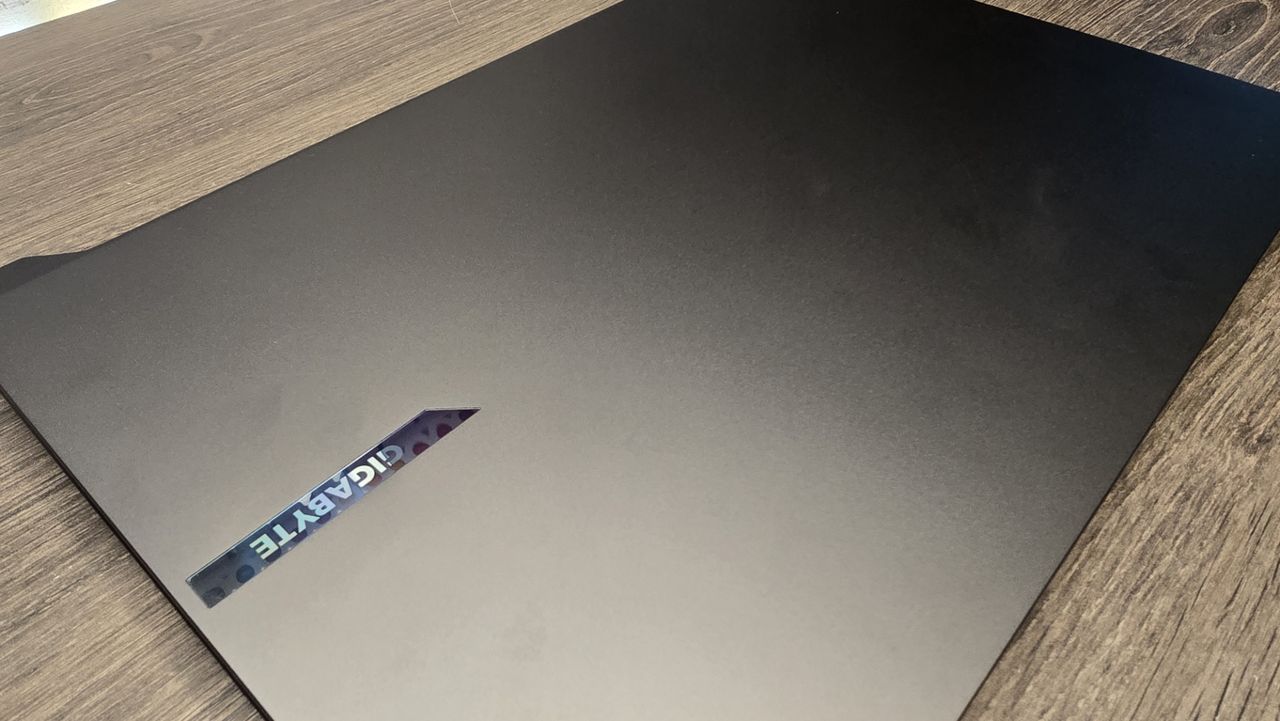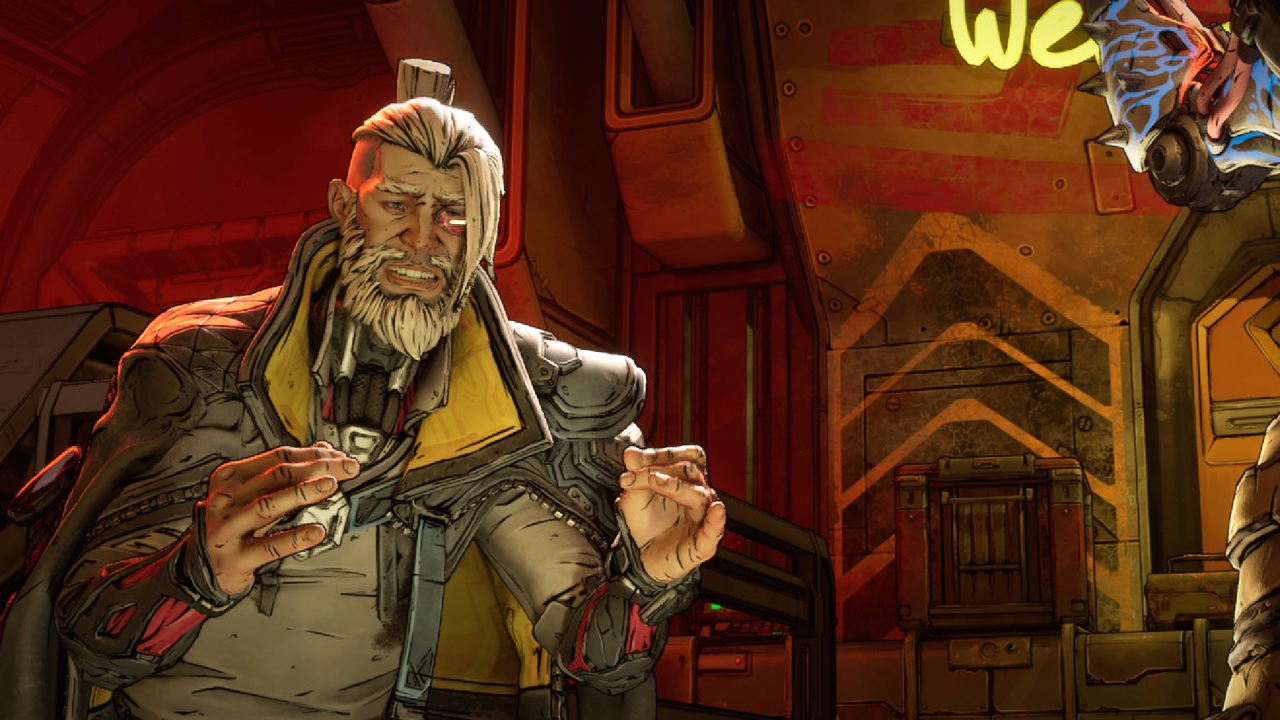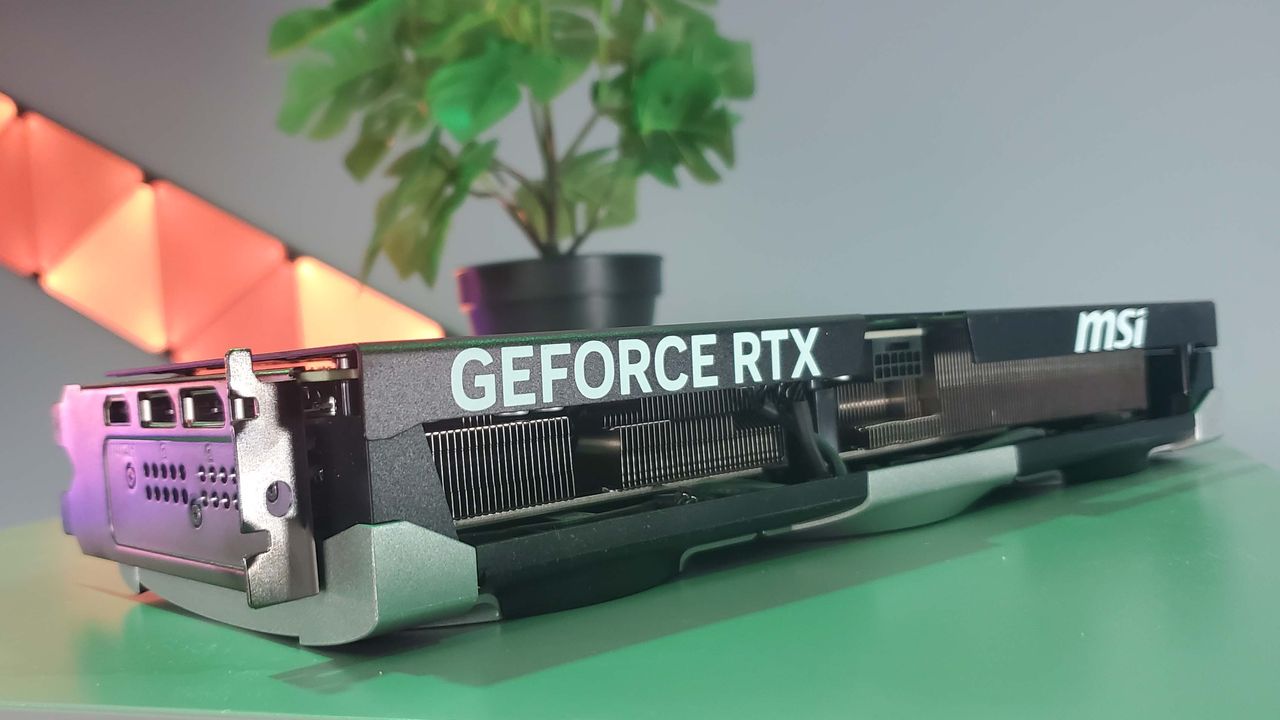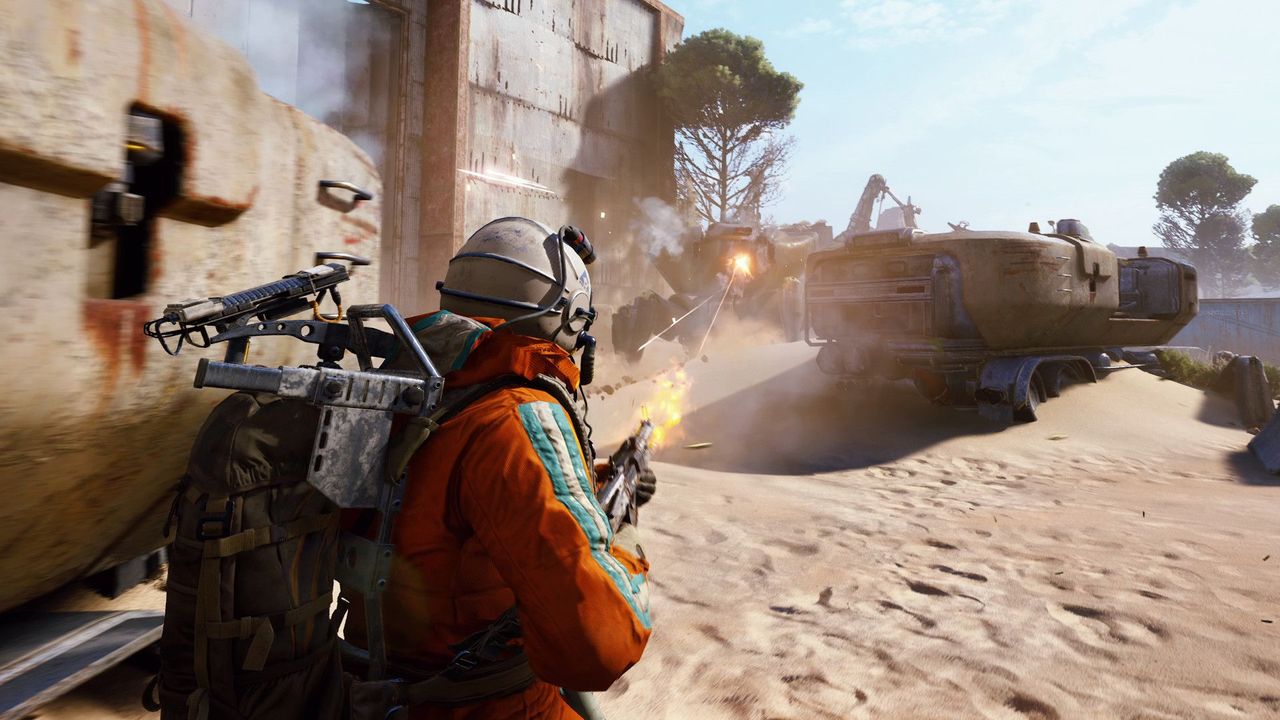
The Pokémon Trading Card Game shows no signs of slowing down in 2025. Whether you're a competitive player, a casual collector, or someone who's just dropped way too much money on framed booster art, this year's TCG lineup is going all in with new mechanics, nostalgic reprints, and plenty of chances to chase that cardboard high.
Pokémon TCG: 2025 Release Calendar - At a Glance
Mega Evolution: Phantasmal Flames - Nov. 14, 2025
The next big expansion in Pokémon TCG has been steadily gearing up. Phantasmal Flames lands on 14 November 2025, and collectors are already scrambling to secure their favourite sealed products before the inevitable shortages. With headliners like Mega Charizard X ex taking centre stage, demand is set to run hot across every major retailer.
They also had the Phantasmal Flames Elite Trainer Box live for a moment (at $79.99), but it looks sold out for now. It's been going in and out of stock all day, so I'd suggest keeping an eye on that too.
What makes this set even more exciting is its size , about 90 cards before secret rares, which makes it the smallest English set in nearly a decade. For collectors like me, that usually means a much more manageable chase, while still packing in plenty of heavy hitters for players.
The product lineup looks pretty stacked too. We’ll be getting the usual booster packs and booster box (36 packs), a 9-pack Elite Trainer Box featuring a shiny new Charcadet promo, and an Ultra-Premium Collection built around Mega Charizard X ex.
On top of that, two theme decks for Mega Gengar ex and Mega Diancie ex are arriving a few weeks early on October 24, which is a fun way to get a taste of the set before launch. If you’re like me and love cracking packs, the booster box is the way to go, but the UPC is already looking like the big collector piece this time around.
What ties it all together is the Japanese set Inferno X, which hit shelves there in late September. That set had only 80 cards, and once you add in the Mega Gengar and Mega Diancie decks, you basically get the full Phantasmal Flames lineup.
We’ve already seen some killer reveals, including the Mega Charizard X ex secret rare previewed at Worlds, so I’m fully expecting that to be the chase card when this launches. Between the smaller set size, Charizard hype, and some solid gameplay cards, I think this one’s going to fly off shelves and I’m definitely locking in my preorder.
Mega Evolution - Released Sept. 26, 2025
Just when you thought the Pokémon TCG had enough going on with Destined Rivals and Black Bolt and White Flare, in comes a brand new series altogether with the Mega Evolution sets.
Announced at Japan's Championship tournament, the two new sets featuring Mega Lucario ex and Mega Gardevoir ex mark the popular trading card game stepping away from its Scarlet and Violet era.
Mega Evolution will release on August 1, 2025, in Japan, and September 26 in English markets (with more preorders also supposedly taking place on September 13).
Finding sealed products like these at a fair price is already a challenge. Some stores are holding MSRP, others are inflating prices, and secondary marketplaces have their own dynamics to keep in mind, too.
But the gist is: collectors who must have the ETB, Best Buy and Walmart are worth constant refreshing. If reliability matters more, TCGplayer is the most straightforward (though slighty more costly) option.
While we can maybe expect products from this set to be joining Pokémon TCG deals further down the line, huge initial demand will definitely see certain cards become price juggernauts among upcoming crashers and climbers.
It’s already shaping up to be a huge year, so here’s everything from the rest of the Pokémon TCG releases in 2025. And yes, IGN will be tracking all the buy links, both here and on socials at @IGNDeals.
Pokémon TCG 2025 Holiday Calendar - Released Aug. 22, 2025
The Pokémon Company started releasing annual holiday calendars back in 2022, inspired by the Pokémon Countdown Calendar from 2008.
These products are surprisingly good value in the current TCG market, as well as for casual fans of the series in other forms. You can see the listing here at Amazon or scroll on for more details.
The 2025 Pokémon Holiday Calendar released on August 22 and initially retailed for $49.99 at Target before quicklly selling out. It's now available at Walmart for a pricier $64.99 or at Amazon for $69.
Black Bolt and White Flare - Released Jul. 18, 2025
Scarlet & Violet: Black Bolt and White Flare are now available. We recently previewed the new sets that brought 156 Unova Illustration cards to Pokémon TCG, and it's pretty good!
If you haven't secured your boosters for Black Bolt and White Flare sealed products, feel free to try your luck at launch at your local brick and mortar or online, or even at Amazon right now.
Alternatively, TCGPlayer pricing for presale sealed product is crashing, so I reckon we're seeing the usual price crash post-launch coming earlier.
What do I think of the set? I think it's great and possibly the best opportunity to pull Illustration Rares in the Scarlet and Violet era, it's ending on a high note.
Personally I'm not a fan of stuffing the set with Pokéball and Masterball rares, but in terms of quality and presentation they look cool. It would be grand to see Mega Evolution double down on the dual format and loads of Illustration Rares, but this is an encouraging sneek peek into what's next for Pokémon TCG.
Black Bolt and White Flare focus on the 156 Pokémon originally discovered in the Unova region. Each Unova Pokémon will appear as either an illustration rare or a special illustration rare card, with different versions available in Black Bolt and White Flare products.
- July 18, 2025: Scarlet & Violet Black Bolt/White Flare ETBs (9 boosters, promo, accessories); Binder Collection (5 boosters, Zekrom/Reshiram album); Unova Poster Collection (6 boosters, Snivy/Tepig/Oshawott promos, poster); Unova Mini Tin (2 boosters, art/sticker card).
- August 1, 2025: Tech Sticker Collection (3 boosters, Reuniclus/Gothitelle promo, stickers); Unova Victini Illustration Collection (4 boosters, foil/parallel/oversized Victini).
- August 22, 2025: Booster Bundle (6 Black Bolt/White Flare boosters).
Destined Rivals - Released May. 30, 2025
Things really kicked off on May 30 with Destined Rivals. This set brings back Trainer’s Pokémon, reintroduces Team Rocket for another round of villainous fun, and includes some of the best card art we’ve seen in ages.
Destined Rivals top chase card prices are also finally stabilizing, making it a great time to snap some up. Team Rocket's Mewtwo ex SIR has been going for anything over $450 since release, but is starting to settle on a more respectable $370.
A few weeks ago the Destined Rivals singles market was bouncing all over the place. Some cards were doubling in price overnight and it was tough to tell what was hype and what would hold. Now prices feel a lot more stable.
Some have dipped. Some Destined Rivals bangers are just cruising right at market. It feels like we’re finally seeing what these cards are actually worth.
Above are the ten most expensive cards in the set right now. A couple of them are legit strong in decks. A few are pure collector bait. Team Rocket's Mewtwo ex was the hottest card in the set for a while and it’s still holding close to market. The artwork is what does it for me.
Mewtwo looks like it's about to explode, floating in this dim lab setting with everything glowing around it. The ability makes it tough to use unless you’re running a full Rocket build, but once it's active, Erasure Ball gives you some serious power. Definitely still a top-tier pull even with the market calming down.
What Cards Are Hot Right Now?
Scarlet and Violet 151 card prices continue to shift, with Charizard ex, Blastoise ex, and Venusaur ex SIRs climbing steadily thanks to standout artwork, competitive playability, and high collector demand. Charizard has jumped to $210, Blastoise is up 28% to $84.99, and Venusaur is up 27% to $69.99. Zapdos ex and Alakazam ex are also on the rise, with Alakazam seeing the biggest gain of 35% to $44.98.
On the other hand, prices for Kanto starter Illustration Rares like Charmander, Bulbasaur, and Squirtle have dipped as more product floods the market. Charmander is down 14% to $44.44, Bulbasaur is down 18% to $32.20, and middle evolutions like Charmeleon and Wartortle are following the same trend. While the final evolutions remain the most sought-after, now is a good time to pick up the earlier stages at a more reasonable price.
Journey Together - Released Mar. 28 2025
It’s about time we got a set like this. Bringing back nostalgic Trainer’s Pokémon cards from the Gym Heroes era. N’s Zoroark ex and Lillie’s Clefairy ex end the chaos of endless secret arts for a more curated, collectible experience.
With just 16 Pokémon ex, 11 illustration rares, and three hyper rare gold cards, it’s easier to track what’s worth pulling without feeling like you need a PhD in pack odds.
Fancy snagging the Enhanced Booster Display Box with its bonus N’s Reshiram illustration rare or pull Iono’s Bellibolt ex? This set screams nostalgia with a new coat of paint.
Rare Cards and Collector’s Highlights
If you’re into collecting, this set hits the sweet spot. It’s got 16 Pokémon ex, six unique illustrations rares, and just three hyper rare gold cards, which means you won’t have to mortgage your house chasing every rarity. And the artwork? Illustrating rares like N’s Zoroark ex will look incredible in your binder.
Pokémon Center’s Enhanced Booster Display Box is the one to grab for preorder exclusives. It comes with a bonus N’s Reshiram illustration rare card—a little extra flex for your collection.
What Makes Scarlet & Violet—Journey Together Special?
The Scarlet & Violet—Journey Together expansion is a nod to fans who've been in it for a long time. Remember Gym Heroes?
This set revives the much-loved Trainer's Pokémon cards, spotlighting the bond between iconic Trainers and their Pokémon.
Cards like N's Zoroark ex, Hop's Zacian ex, and Iono's Bellibolt ex aren't just cool to look at; they call back to the late '90s and early '00s Pokémania. We're all for that here.
What's even better? This expansion ditches the overload of secret rares that made recent sets feel overwhelming.
Instead, Journey Together keeps things tight, making tracking what you want to pull easier. Whether it's an illustration rare, a special art card, or one of those hyper-rare gold beauties, you can finally open packs without feeling like you need a flowchart to figure out what's in the set.
Prismatic Evolutions - Released Jan. 17 2025
Prismatic Evolutions, kicked off 2025, and it’s all about Eevee and its many evolutions. This set is doing things differently, which is probably why stock sells out as soon as it comes in.
This is another 151 situation, but there's plenty of stock refeshes coming throughout 2025. You won’t find these cards in the usual booster packs.
Instead, they’ll be released in boxed sets throughout the year, each packed full of exclusive cards celebrating Eevee and friends. With over 175 cards, including unique designs and new game mechanics, Prismatic Evolutions is shaping to be a hit with collectors and competitive players alike.
Rare Cards and Collector’s Highlights
For collectors, Prismatic Evolutions isn’t short on treasures. Each Eevee evolution has its special illustration and hyper-rare gold Pokémon ex card, making them must-haves for anyone building a showcase-worthy collection.
The set includes 32 illustration rares featuring detailed artwork for Pokémon ex and Supporter cards, so plenty of eye candy is here. With so many unique finishes and designs, it’s bound to make a few waves among fans.
Between the fresh artwork, inventive mechanics, and the undeniable charm of Eevee and friends, Prismatic Evolutions is set to be one of the year’s standout sets. Collectors and players alike will find something to love here, from stunning illustration rares to powerful new game cards that can make a real difference in play.
What Makes Prismatic Evolutions Special?
This set brings some new gameplay tricks and visually striking designs. The big attraction is the debut of Stellar Tera Pokémon ex cards, which showcase Eevee and each of its evolutions with Terastal-inspired art.
These aren’t just nice to look at—they come with moves that need multiple energy types to activate, encouraging players to build balanced, flexible decks. And for the first time, Eevee’s ex card can evolve into other ex forms, giving trainers even more options to play with.
Collectors will appreciate some cool new reverse holo designs featuring Poké Ball and Master Ball patterns that pop on any card. And if you’re into rare cards, six ACE SPEC Trainer cards are in the set, limited to one per deck.
Each one packs a serious punch in gameplay—like the MAX Rod ACE SPEC card, which lets players retrieve up to five Pokémon or Energy cards from their discard pile. On top of that, Prismatic Evolutions features a mix of ultra-rare illustration cards, gold-edged rares, and special art that takes these cards to another level.
Pokémon TCG Sets From 2024
Released on November 8, 2024, Surging Sparks was last Pokémon TCG Scarlet & Violet series main expansion for 2024.
Adapted from the Japanese sets Supercharged Breaker and Paradise Dragona, this expansion combines the raw power of electric Pokémon with the majestic strength of Dragon-types like Alolan Exeggutor ex and Latias ex.
With over 250 cards, including new ACE SPEC cards and Stellar Tera ex Pokémon, Surging Sparks has exciting new additions that will shake up the competitive scene and include some epic chase cards for collectors.
Beyond the headlining Pikachu ex, Surging Sparks offers a diverse range of powerful cards, including nine regular ex Tera Pokémon, 23 illustration rares, and six golden secret rares, making it a must-have for any serious Pokémon TCG fan.
Stellar Crown: September 13 2024
Stellar Crown is set to launch on September 13, 2024, as the seventh main expansion in the Scarlet & Violet series. This highly anticipated set introduces the Legendary Pokémon Terapagos and a new wave of Stellar-type Tera Pokémon. With over 170 cards, including over a dozen new Pokémon ex and a variety of Trainer and ACE SPEC cards, Stellar Crown is packed with powerful new mechanics and stunning artwork.
Fans can look forward to the first English appearances of Illustration Rare cards for classics like Squirtle and Bulbasaur, alongside chase cards like Special Illustration Rare versions of Hydrapple ex, Galvantual ex, and Terapagos ex. This set also introduces innovative strategies with cards like Briar, Sparkling Crystal, and the ACE SPEC Stadium card Great Tree, which could revolutionize Tera-focused decks.
Shrouded Fable August 2, 2024
Shrouded Fable brings Pokémon from the Mochi Mayhem mission to the TCG. This set features woodcut-style illustration rares and introduces new ex-cards for Pecharunt and The Loyal Three. With unique cards and showcase collections, Shrouded Fable promises to be a visually stunning and strategically rich set.
Twilight Masquerade (May 24)
Twilight Masquerade is inspired by the Teal Mask DLC from Pokémon Scarlet and Violet. This set features four different Ogerpon ex cards, each with unique types and abilities based on the mask it wears. New Ace Spec cards are also introduced, adding strategic depth to the game.
Stay tuned for more exciting Pokémon TCG releases throughout 2024. With each set bringing unique themes and mechanics, there's something for every fan to enjoy. While waiting, why not check out today's best Pokémon TCG deals? That's right, we're that awesome!
Paldean Fates Set (January 26th – February 23rd)
Paldean Fates released in three waves, offering a unique approach with no individual booster packs. Instead, products like the Elite Trainer Box and Premium Collections provided a variety of boosters and exclusive cards. The set's focus on Shiny and Baby, Shiny Pokémon with vibrant foil treatments, made it a hit among collectors and players alike.
Combined Powers Premium Collection (Late February 2024)
This collection brought back exclusive cards from the 2023 Pokémon TCG Classic set, offering a more affordable way to acquire these Legendary Pokémon. With foil variants and multiple booster packs, it was a must-have for collectors and competitive players.
Mabosstiff ex Box (Late February 2024)
This box features the Dark-type Pokémon Mabosstiff ex and its Basic form, Maschiff. It provides powerful cards with efficient energy costs. Including four booster packs, it's a practical addition for players looking to strengthen their Dark decks.
Houndoom and Melmetal ex-Battle Decks (February 23)
These ex-Battle Decks were perfect for intermediate players. They offered ready-to-play decks focused on specific Pokémon types. The balanced design and included accessories made them great for refining strategies and exploring new deck combinations.
Paldea Adventure Chest (March 1st, 2024)
Though aimed at younger fans, the Paldea Adventure Chest included valuable promo cards and fun accessories. The high price might be a barrier for some, but the unique contents and attractive packaging made it a delightful addition to any collection.
2023 World Championship Decks (March 1)
These decks offered a glimpse into the strategies of world champions, providing excellent value with powerful cards and themed accessories. While not tournament-legal, they were ideal for casual play and honing advanced tactics.
Ninetales and Zapdos Deluxe ex Battle Decks (March 22)
Arriving on March 22nd, the Deluxe ex Battle Decks feature Ninetales ex and Zapdos ex. These decks are designed for experienced players and include a Pokémon coin, themed playmat, damage counters, condition markers, a strategy sheet, and a Pokémon TCG Live code card.
Temporal Forces (March 22)
Temporal Forces, releasing on March 22nd, is the next main set following Paradox Rift. It includes booster packs, boxes, and two Elite Trainer Boxes, each with its exclusive foil promo card and themed accessories. This set continues exploring time-based mechanics, offering exciting new cards and gameplay possibilities.
Iono Premium Tournament Collection (April 5th, 2024)
The Iono Premium Tournament Collection, launching on April 5th, celebrates the popular Supporter Iono with themed accessories, booster packs, and four Iono cards, including a full art variant. This collection is ideal for fans looking to enhance their decks with powerful support cards and stylish accessories.
Grafaiai ex Box (April 5)
Releasing alongside the Iono Premium Tournament Collection, the Grafaiai ex Box includes:
- A foil Grafaiai ex card.
- An oversized version.
- A holographic Shroodle card.
- Four booster packs.
- A Pokémon TCG Live code card.
We also have a full preview schedule available for Magic the Gathering, if you're interested in cracking on with some other trading card games this year.
Christian Wait is a contributing freelancer for IGN covering everything collectable and deals. Christian has over 7 years of experience in the Gaming and Tech industry with bylines at Mashable and Pocket-Tactics. Christian also makes hand-painted collectibles for Saber Miniatures. Christian is also the author of "Pokemon Ultimate Unofficial Gaming Guide by GamesWarrior". Find Christian on X @ChrisReggieWait.







